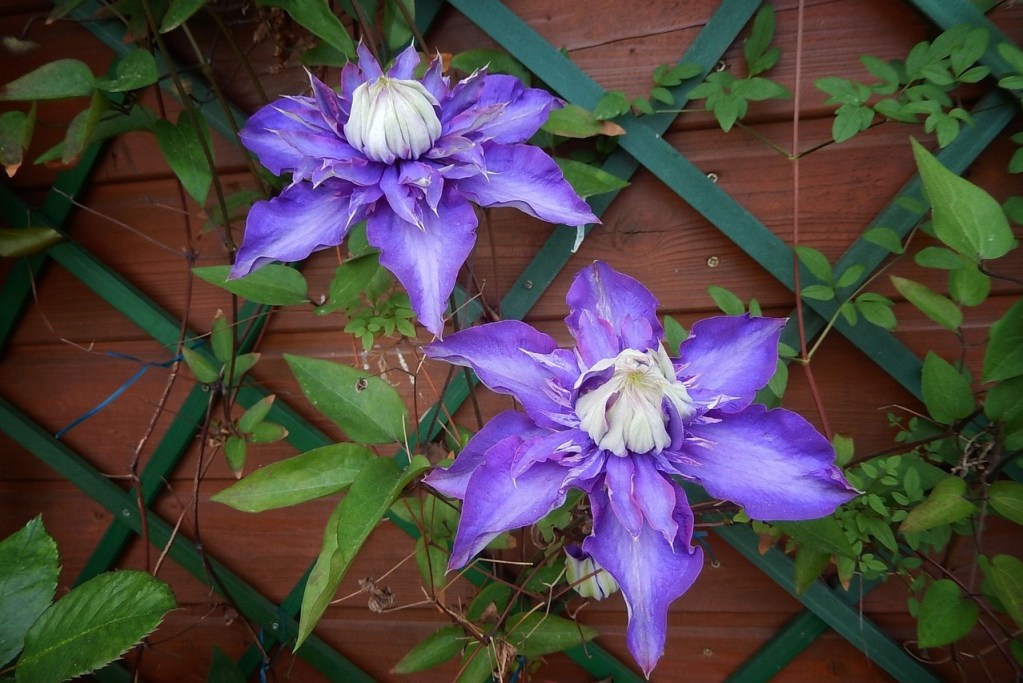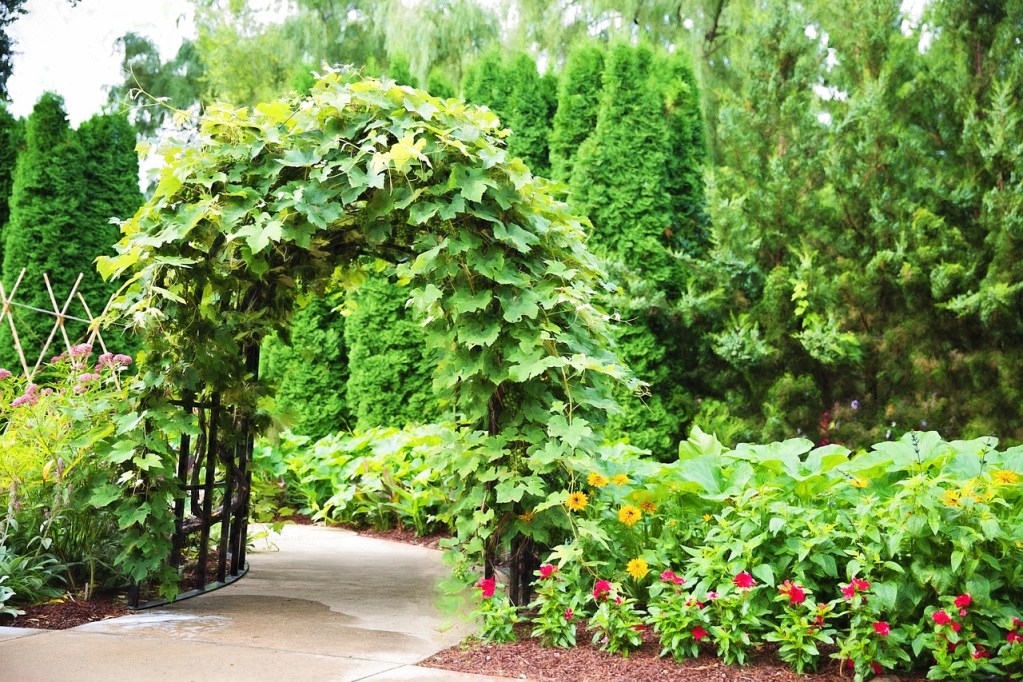Choosing the right trellis for vines can be tricky, but we’re here to help. There are so many wonderful vining plants, from flowers like morning glories to vegetables like cucumbers. Although some vines are content to spread across the ground, most appreciate having something to climb. Vines will climb almost anything — from fences to trees — but a trellis is an excellent option. They provide support for vines, but they’re also aesthetically pleasing, easy to put up, and come in a variety of styles. If you’re looking for the best trellis for your plants, there’s no need to be overwhelmed with all your options. We’ll walk you through the process of selecting your trellis.

Consider your plants
The most vital function of a trellis is to support your plants. So it’s important to consider which plants will be climbing your trellis and what their needs are. If you already have a particular trellis in mind, you can use this to reverse engineer what plants will pair perfectly with that trellis.
Weight
Heavier plants will need a sturdier trellis. While this may seem obvious, it’s an important detail and shouldn’t be overlooked. Light, flowering vines can grow over a trellis of almost any size, shape, or material, but vegetables need more consideration. Arches and A-frame trellises are the sturdiest shape, and metal is the strongest material. A thick wooden trellis may also hold up, but it needs to be sealed properly to prevent weather damage. Keep in mind that especially heavy vegetables, such as pumpkins, may need the additional support of a sling to keep them on the vine. If you’re growing more than one plant on your trellis, remember that it has to be strong enough to support the combined weight of all the plants growing on it.
Number
The more plants you have, the longer your trellis needs to be. A good rule of thumb is to measure the area where you want to place your vining plants and add an inch or two to either side. Trellis fences are an excellent choice for this, especially if your garden borders someone else’s property. A trellis fence can actually serve as a more affordable and more aesthetically pleasing privacy fence. If your vines are spread further apart or you don’t want a full wall, multiple smaller trellises may be the way to go.
Position
Where your vining plants are located in your garden will also impact which trellis is best for you. If your vines are in one straight line, then a trellis fence or wall is a great option, while vining plants on opposite sides of a pathway are good candidates for an archway. If you have a cluster of vines in the center of our garden, try a trellis tower or a conical trellis. These can be small and simple or large and ornate; they are also sometimes called trellis obelisks.

Consider your garden
Of course, your plants don’t exist in a vacuum. Your trellis has to fit with your overall garden, too. Matching your trellis to any existing aesthetic is fairly easy, but no matter the theme or design you have, here are two other important things to consider.
Climate
Climate is an often overlooked factor when choosing a trellis, but it can have potentially disastrous results. Gardeners living in climates that are prone to rain or heavy snow may want to avoid wooden trellises. If heavily sealed and painted they can last a year or two but are not a good choice for long-term gardens. In areas with excessive heat or cold, be aware that metal trellises could burn or freeze your plants. Giving a metal trellis some shade in hotter locations is smart, while cold and dry areas should look for wood trellises, and cold and wet climates may fare better with plastic.
Size
The larger your garden, the more room you have to play with shapes and angles. However, smaller gardens can still be home to unique trellis arrangements with just a bit of consideration. Look for shorter trellises for edges to avoid casting shade over your garden. Consider making use of a single central trellis obelisk or even multiple shorter trellis cones. Arches may not be a great choice for smaller gardens since they tend to be quite large — unless you need them for hefty vegetable vines.
Once you’ve taken these factors into account, you’re ready to choose your trellis. There are many different designs and styles available, so even if your garden isn’t a match for the type of trellis you want, you can still find something similar that will work for you. In the end, all that matters is that you and your plants are happy.
Editors' Recommendations
- Plant these stunning flowering shrubs for a showstopping garden display this spring
- 3 incredible reasons why you should be using coffee grounds in your garden
- Have a gross mealybug infestation on your plants? Try one of these remedies
- These plants should be among the first you plant this year
- Unique and whimsical flowers to add to your collection for a fairy-tale garden landscape this spring





